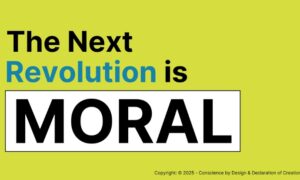Annual financial reports. The phrase alone tends to quash any actual excitement about reading an annual report. Yet, we all know these financial documents are hugely influential in business—highlighting corporate achievements, engaging stakeholders, and setting future goals and plans in motion. While a necessary good, most people will order financial report covers and dress them to theme: an uninspiring, boring, and strictly utilitarian design that gets the job done and nothing else. Or what they must think an annual report looks like on the outside.
Distilling your brand’s identity into something as unexcitable as a financial report takes knowing a few of the most common trends. Combined or borrowed separately, these will produce a striking design that’s exciting to share and become a standalone piece of content in its own right.
Using Human-Centric Designs
A growing trend in financial report covers is the shift toward human-centric designs. This approach emphasizes incorporating people, emotions, and relatable imagery, moving beyond abstract numbers and data. By featuring human elements, companies create a more personal connection with their stakeholders, making the report feel less like a cold financial document and more like a story of the people behind the numbers.
For example, including images of employees, customers, or even community members can give the report a sense of warmth and inclusivity. The key is to align these designs with the company’s message—if the report discusses employee growth or community initiatives, showcasing real individuals strengthens that narrative. Human-centric designs work particularly well for companies looking to emphasize their corporate social responsibility (CSR) efforts or their commitment to diversity and inclusion.
Harnessing the power of color
Color is a vital component of effective financial report cover designs, as it influences emotions and perceptions. Utilizing well-thought-out colors can evoke specific feelings or associations—blue, for instance, often conveys trust and reliability, making it ideal for financial institutions. Conversely, vibrant colors like orange or green can signify innovation and growth. Designers should consider the brand’s identity and the message they wish to communicate when selecting colors. Additionally, using color strategically can guide the reader’s attention to key elements, such as headings or callouts, ensuring that important information is easily accessible and engaging. To understand how all the colors affect audience perception, learn what folder colors reveal about your company—it’s the exact same principle.
Illustration Versus Photography
When it comes to financial report covers, one of the key design choices is deciding between illustration and photography. Both can be powerful tools, but each has its distinct advantages and applications.
Illustration offers more flexibility and creative freedom. It can be used to visualize abstract concepts, like growth or innovation, in ways that are impossible to capture with photography. Imagine a branch flourishing with financial metrics or key milestones with text overlays furthering the message, and you’ll realize why photography has its limitations.
Photography, on the other hand, brings a sense of realism and authenticity to the report cover. It can make the report feel more grounded by showcasing real people, places, or products. Photography is particularly effective for companies that want to highlight transparency or show tangible assets, like a new office building or a product launch. High-quality photography can also give a sense of professionalism and polish, which can be particularly impactful for industries like finance or real estate.
Ultimately, the choice between illustration and photography depends on the message the company wants to convey. If the goal is to appear creative and forward-thinking, illustration might be the better choice. If the aim is to communicate trust, reliability, or tangible success, photography can help achieve that.
Incorporating QR Codes in Your Design
QR codes are increasingly popular in print designs as companies look to bridge the gap between physical and digital media. Including a QR code on your report cover can turn a static document into an interactive experience, allowing readers to dive deeper into the content without overwhelming the layout of the report itself.
For instance, you could use QR codes to link to additional resources such as video messages from the CEO, detailed financial data that would otherwise clutter the printed report, or even interactive charts. These codes also offer a way to track engagement, as you can monitor how many users scanned the code and interacted with your digital content for that specific campaign.
The key to integrating QR codes into your design is subtlety. QR codes should blend seamlessly into the overall aesthetic without becoming a distraction. Placing them near relevant information, like next to a summary of financial data, can ensure they serve a purpose without disrupting the visual flow of the cover.
Integrating Geometric Shapes
Companies might use geometric shapes, offering a modern and dynamic way to visually communicate structure and organization. These shapes can evoke a sense of precision and control, which aligns well with the theme of financial stability and progress.
For example, a company might use geometric shapes to symbolize its strategic pillars or the structure of its business. A triangle, often associated with strength and balance, could represent a solid foundation, while interconnected circles might symbolize unity or collaboration. The use of shapes not only makes the cover visually appealing but can also communicate underlying messages about the company’s performance or strategy.
Now, design your own report cover
As financial report covers evolve, embracing innovative design trends becomes essential for standing out in a competitive landscape. By focusing on creativity and effective communication, companies can transform their reports into powerful tools that engage stakeholders and convey their narratives.



































